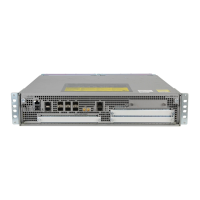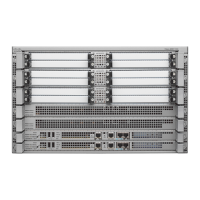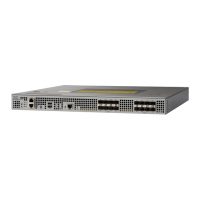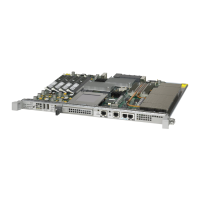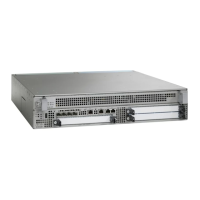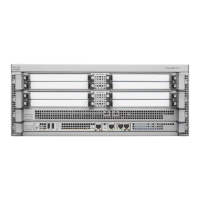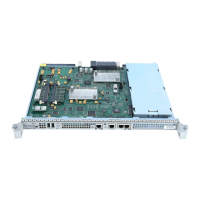7-13
Cisco ASR 1000 Series Aggregation Services Routers SIP and SPA Software Configuration Guide
OL-14127-08
Chapter 7 Configuring the ATM SPAs
Configuration Tasks
Configuring a PVC on a Multipoint Subinterface
Creating a multipoint subinterface allows you to create a point-to-multipoint PVC that can be used as a
broadcast PVC for all multicast requests. To create a PVC on a multipoint subinterface, use the following
procedure beginning in global configuration mode:
Command or Action Purpose
Step 1
Router(config)# interface atm
slot/subslot/port.subinterface multipoint
Creates the specified point-to-multipoint subinterface on
the given port on the specified ATM SPA, and enters
subinterface configuration mode, where:
• slot—Specifies the chassis slot number in the Cisco
ASR 1000 Series Router where the SIP is installed.
• subslot—Specifies the secondary slot of the SIP
where the SPA is installed.
• port—Specifies the number of the individual
interface port on a SPA.
• subinterface—Specifies the number of the
subinterface.
Step 2
Router(config-subif)# ip address address mask Assigns the specified IP address and subnet mask to this
subinterface.
Step 3
Router(config-subif)# no ip directed-broadcast (Optional) Disables the forwarding of IP directed
broadcasts, which are sometimes used in denial of
service (DOS) attacks.
Step 4
Router(config-subif)# pvc [name] vpi/vci Configures a new ATM PVC by assigning its VPI/VCI
numbers and enters ATM VC configuration mode. The
valid values for vpi/vci are:
• name—(Optional) An arbitrary string that identifies
this PVC.
• vpi—Specifies the VPI ID. The valid range is 0 to
255.
• vci—Specifies the VCI ID. The valid range is 32 to
65535. Values 1 to 31 are reserved and should not be
used, except for 5 for the QSAAL PVC and 16 for
the ILMI PVC. ILMI is unsupported on the Cisco
ASR 1000 Series Routers.
Note When using the pvc command, remember that the vpi/vci combination forms a unique identifier for the
interface and all of its subinterfaces. If you specify a vpi/vci combination that has been used on another
subinterface, the Cisco
IOS XE software assumes that you want to modify that PVC’s configuration and
automatically switches to its parent subinterface.
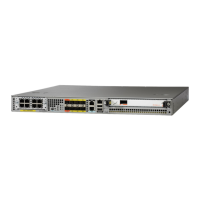
